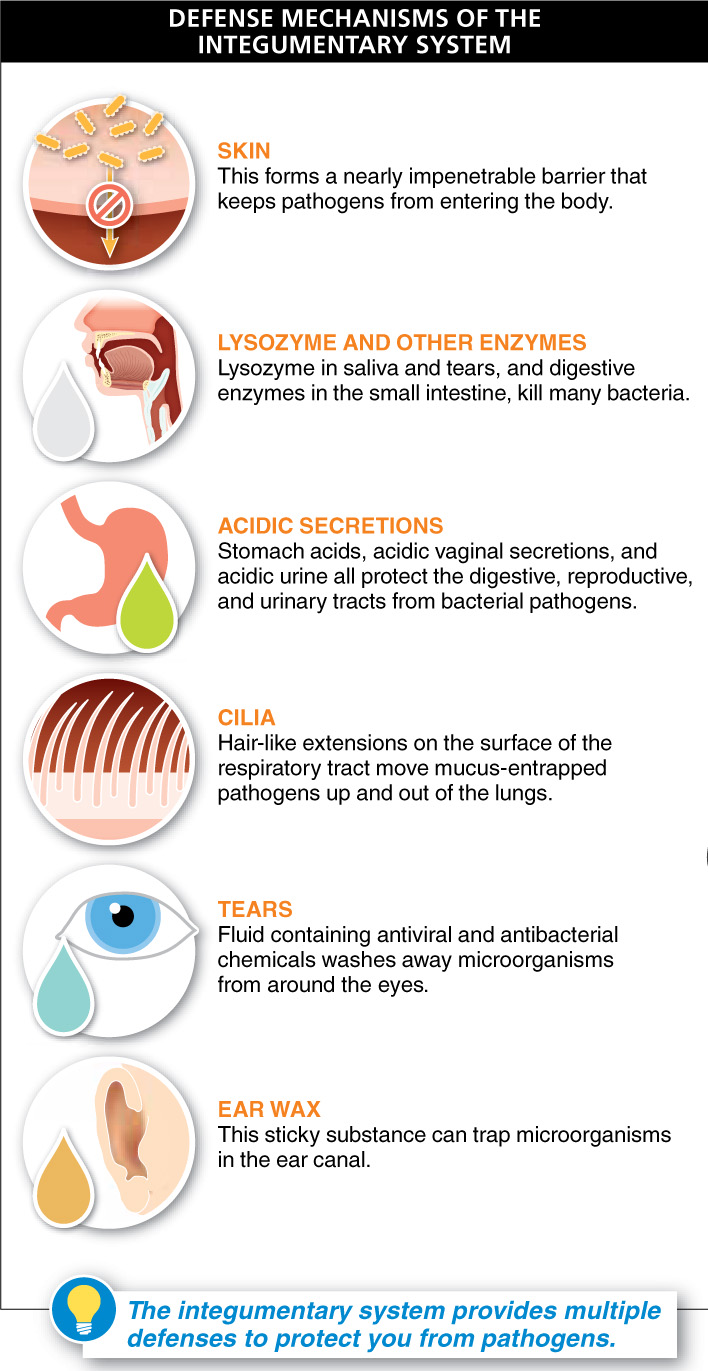Just as a high-
1049
How dangerous is it to sit directly on a toilet seat in a public restroom?
Have you ever sat down on a public toilet seat only to wonder if you were going to contract some horrible disease from it (FIGURE 26-6)? The good news is that most human pathogens cannot survive outside the body for very long, and a cold, smooth toilet seat is not an ideal place for them to survive. Furthermore, pathogens need some way to get into your body, and the skin on your buttocks is generally a strong barrier to entry for any pathogens on the toilet seat. Many public bathrooms offer toilet seat covers that can act like a second skin, further reducing the already very low risk.

Skin is not just a passively protective wall, however. It’s more like a wall with armed guards. In addition to forming a nearly impenetrable barrier, skin cells actively secrete chemicals that inhibit bacterial growth (FIGURE 26-7). Sweat secreted onto the skin’s surface, for example, contains lysozyme, an enzyme that kills bacteria by damaging their cell walls. The protection provided by skin becomes really clear in burn victims: lacking skin in certain areas, they are susceptible to infection by numerous pathogenic bacteria and fungi. The external and internal surfaces of the body, such as eyes, ears, and the linings of the digestive and respiratory tracts, also protect us from environmental stresses and forces. These body areas, too, are shielded by the integumentary system (and, as we’ll see, by the cells of the non-
Consider, for example, how the digestive tract is protected. Imagine that minutes after you push a germ-


In the respiratory tract, sticky mucus traps pathogens before they can reach the lungs. The epithelial cells that line the respiratory tract have hair-
1050
What is the purpose of ear wax?
The eyes produce tears that physically wash away microorganisms, and that also contain lysozyme and antiviral and antibacterial chemicals. Ear wax serves a protective function, too. Secretions produced by numerous glands inside the ear canal, combined with dead skin cells, make up this sticky substance that is effective at trapping microorganisms. The slight acidity of ear wax and the lysozyme the wax contains also serve to inhibit the growth of some microorganisms that find their way into the ear canal.
TAKE-HOME MESSAGE 26.2
Skin, part of the integumentary system, is a physical barrier that prevents pathogens from entering the body’s cells. Cells that are not covered by skin but are exposed to the external environment are protected by defenses such as bacteria-
List four places in your body that contain the protective enzyme lysozyme.
The book lists secretions on your skin (sweat), your mouth (saliva), your eyes (tears), and your ears (ear wax).